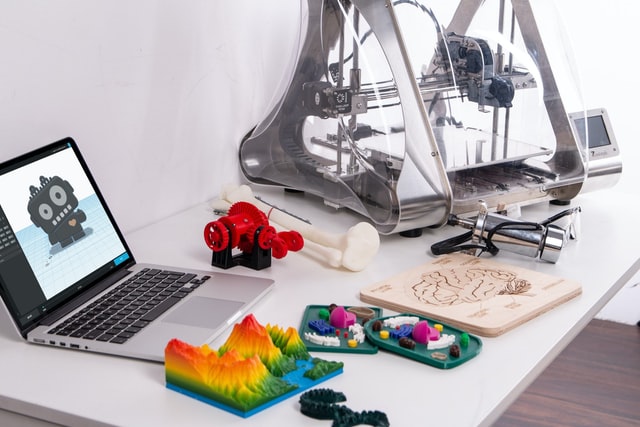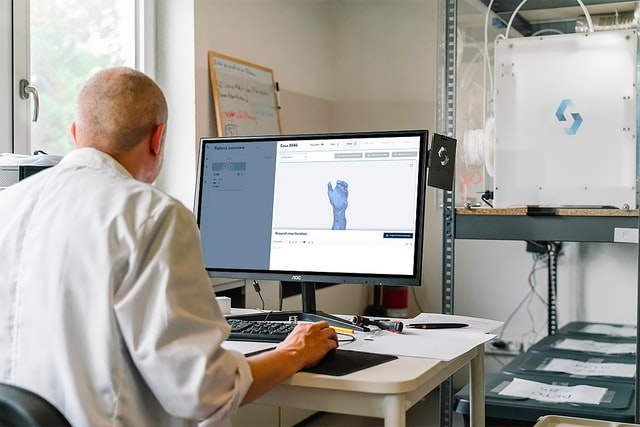You might have heard of 3D printing, and you’re wondering what it is. In case you don’t know, 3D printing allows a product to be printed in three dimensions instead of the two that are possible with 2D printing. The possibilities for 3D printers are practically endless; they can produce almost anything including jewelry, medical implants, and even weaponry. The technology is still relatively new, and it could revolutionize the manufacturing industry as we know it. This article will discuss 3D printing and all of its possibilities.
What is 3D printing, and how does it work?
3D printing is a process wherein an object is created by laying down consecutive layers of material until the entire product is formed. A 3D printer works via computer software where a three-dimensional image of the item to be made is developed. This image is sent to the printer and displayed on its screen where it will show how each layer should look like. It then proceeds to build the model, one layer at a time, by extruding material like plastic, metal wire, or even glass, depending on what is needed for that particular model. For the best print quality, the printer will need to be given time to cool down, as well as allowed to make necessary adjustments before producing each layer. This will ensure the longevity of the device as well.
It is still relatively new
Compared to the older methods of manufacturing like machining, this technology is quite new. Until recently, only large companies could afford the machine and have the capacity to use it. It is still being perfected by many 3D printing companies, and it is slowly being incorporated into the manufacturing industry. For now, this technology is being used mainly to make models, not mass produce items. In the future, it is believed that it will be able to produce almost anything, and it has already been used to create products that would have traditionally been manufactured by other means.
The possibilities for 3D printers
The possibilities for these printers are virtually limitless. What was once used for prototyping can already be used to create final products in certain industries such as the medical and dental fields, product design, architecture, art, jewelry making, and even footwear. With the right materials available through 3D printing, we may soon see them being used to manufacturing final products. This technology could eventually eliminate many of the steps in mass production, as well as provide a more flexible material selection without sacrificing quality or performance.
Who is using it commercially?
One good example of 3D technology use is the medical industry where surgeons can now replace body parts with 3D printed replicas that are custom-fitted and even personalized depending on the patient’s anatomy. This gives them a more reliable way to practice complicated procedures before doing it on a patient. Similarly, architectural firms can use this technology to build scaled prototypes of their design before building them in real life.
It could revolutionize the manufacturing industry
It is not just for prototypes anymore. When it comes to product design, 3D printing has been used to create the mold for injection molding, or it can even directly manufacture a finished product. Using this technology, product designers are capable of producing unique products that cannot be achieved using traditional manufacturing methods. The best way to understand the impact that this technology could have is to consider the fact that it might eventually replace many of the steps in mass production, thereby providing a more flexible material selection without sacrificing quality or performance.
Pros and cons of 3D printing
“If you can think of it, you can create it with 3D Printing.” This is what people usually say about this technology. If you are interested in creating a product and want to see if it would work before actually making the final product, all you need to do is to design it and print it out using a 3D printer. However, 3D printing is not without its limitations. The biggest drawback of this innovative technology is the high cost compared to traditional manufacturing methods. The printers themselves are still much more expensive than mass production because it requires a lot more time and effort. In addition, the quality of printed products may not always be consistent, and the number of available materials that can be used by 3D printers is limited.
3D printing as an innovative manufacturing process can potentially change the face of mass production as we know it. It has already been used in several industries and there is no doubt that more industries will also find ways to use it in the future. Currently, it does have limitations such as high costs compared to traditional manufacturing methods and only certain materials are available for use. However, these limitations would be overcome as 3D printing technology continues to evolve.


